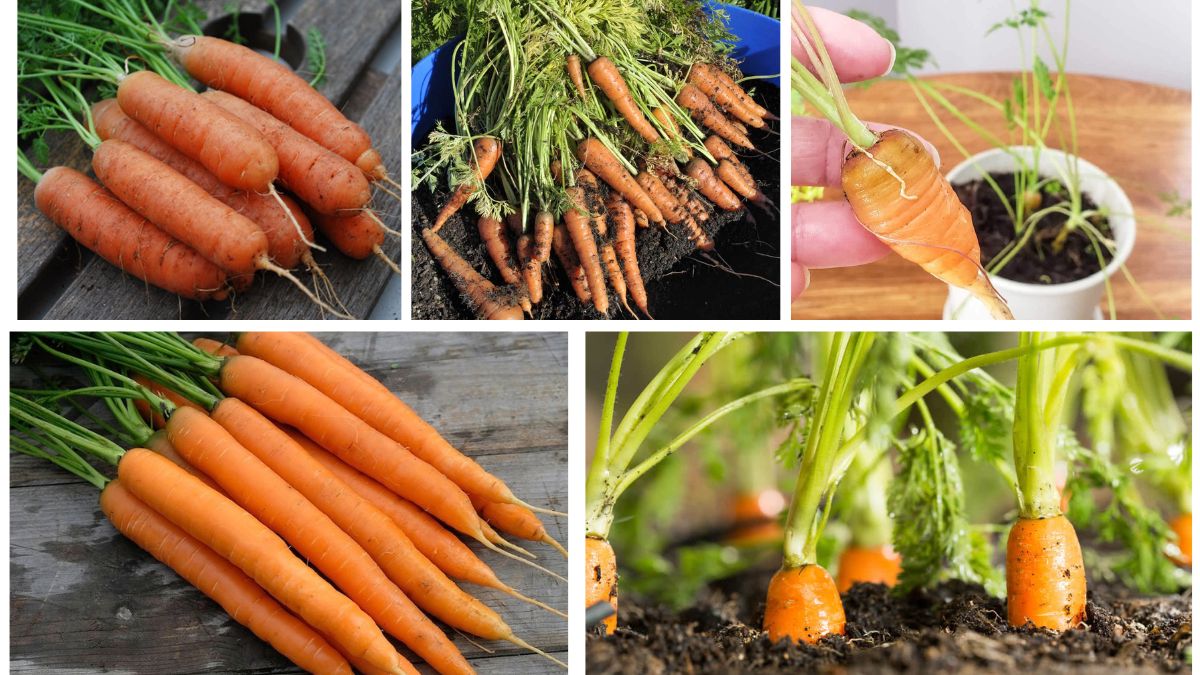Carrots are one of the most popular and nutritious root vegetables, valued for their sweet, crisp flavor and vibrant orange color. Growing carrots at home is both rewarding and practical, allowing you to harvest fresh, organic vegetables right from your garden or even containers. Whether you want to start from seeds—the traditional method—or experiment with carrot tops for regrowth, this guide will walk you through everything you need to know.
In this article, we’ll cover soil preparation, planting methods, care tips, harvesting, and even the differences between growing from seeds versus tops. By the end, you’ll have all the information you need to grow healthy, delicious carrots in your own backyard or balcony garden.
Why Grow Carrots at Home?
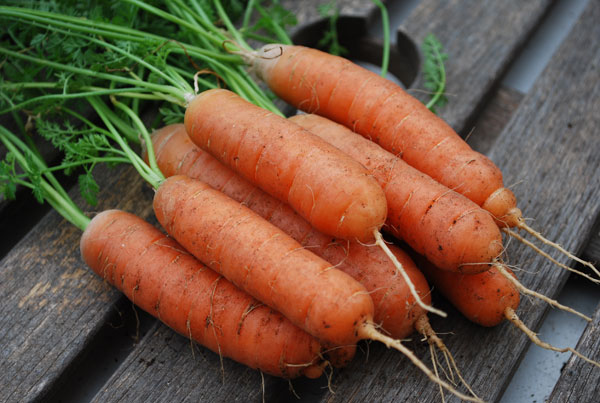
- Freshness and Flavor – Homegrown carrots are sweeter and crisper than store-bought ones.
- Nutritional Value – Carrots are rich in beta-carotene, vitamin A, fiber, and antioxidants.
- Cost-Effective – A small packet of seeds can yield pounds of carrots.
- Space-Efficient – Carrots can thrive in raised beds, pots, or garden soil.
- Fun for Beginners and Kids – Carrots are relatively easy to grow and a great way to introduce children to gardening.
Choosing the Right Variety
Carrots come in many shapes, sizes, and colors. Some popular varieties include:
- Danvers – Classic orange, versatile, and grows well in various soils.
- Nantes – Sweet and cylindrical, perfect for fresh eating.
- Chantenay – Short and stout, great for heavy or clay soils.
- Imperator – Long and slender, often seen in supermarkets.
- Rainbow Carrots – Varieties in purple, yellow, red, and white for visual appeal.
For beginners, Nantes or Danvers are ideal as they are more forgiving and adapt well to home gardens.
Growing Carrots from Seeds
1. Soil Preparation
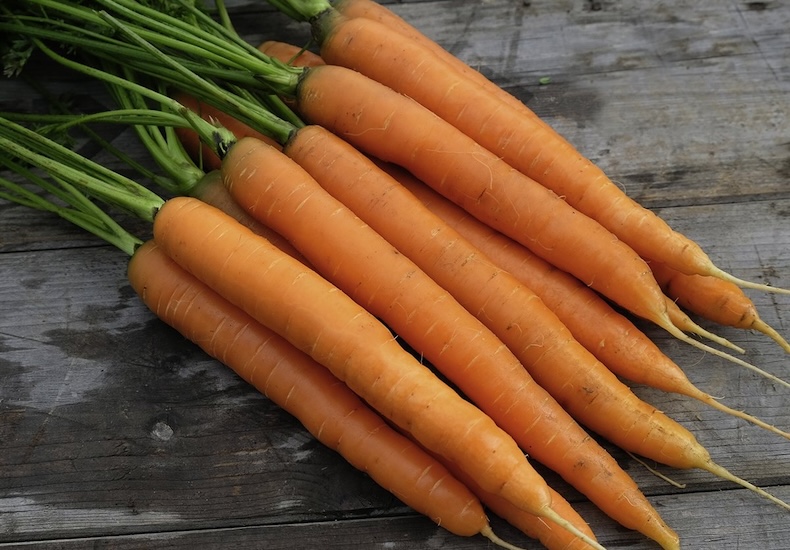
Carrots grow best in loose, sandy, and well-drained soil. Avoid clay-heavy soil or areas with too many rocks, as these cause deformed or stunted roots.
- Soil pH: Aim for 6.0 to 6.8.
- Amendments: Add compost but avoid too much nitrogen-rich fertilizer (it encourages leafy growth rather than root development).
- Depth: Prepare soil at least 12 inches deep for long varieties.
2. Planting Seeds
- When to Plant: Carrots are cool-weather crops. Sow seeds in early spring (2–3 weeks before last frost) or late summer for a fall harvest.
- Spacing: Plant seeds ¼ inch deep, 1 inch apart, in rows spaced 12–15 inches apart.
- Watering: Keep soil consistently moist for germination, which usually takes 10–21 days.
3. Thinning Seedlings
Carrot seeds are tiny, and seedlings often sprout too close together. Thin them once they are 2 inches tall, leaving 2–3 inches between plants. This ensures each carrot has room to grow straight and healthy.
4. Caring for Carrot Plants
- Watering: Provide 1 inch of water per week. Avoid overwatering, as it can cause root rot.
- Mulching: Helps retain moisture and keeps soil cool.
- Weeding: Remove weeds carefully to avoid disturbing roots.
- Fertilizing: Apply a low-nitrogen, potassium-rich fertilizer midway through growth.
Growing Carrots from Tops
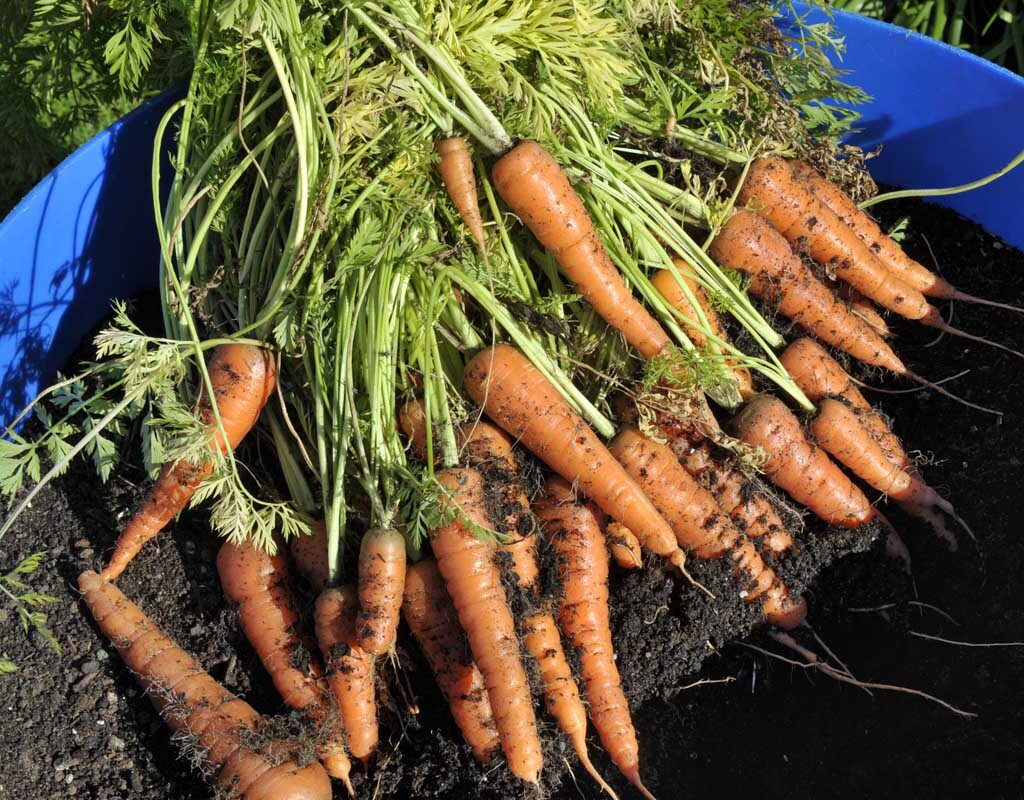
Growing carrots from tops is more of a fun experiment than a method to get full carrots, but it’s perfect for beginners, children, or indoor gardeners.
1. Cutting the Tops
- Take a store-bought carrot and cut off the top 1–2 inches with the greens attached.
2. Regrowing in Water
- Place the cut top in a shallow dish with water, ensuring the base is submerged.
- Set it near a sunny windowsill.
- Change the water every 2–3 days.
Within a week, you’ll notice new green shoots and possibly small rootlets forming.
3. Transplanting to Soil
- After the greens are established, plant the carrot top in a pot or garden soil.
- While the top won’t regrow into a full carrot root, you can harvest fresh carrot greens (edible and great in pesto, soups, or salads).
Container Gardening for Carrots
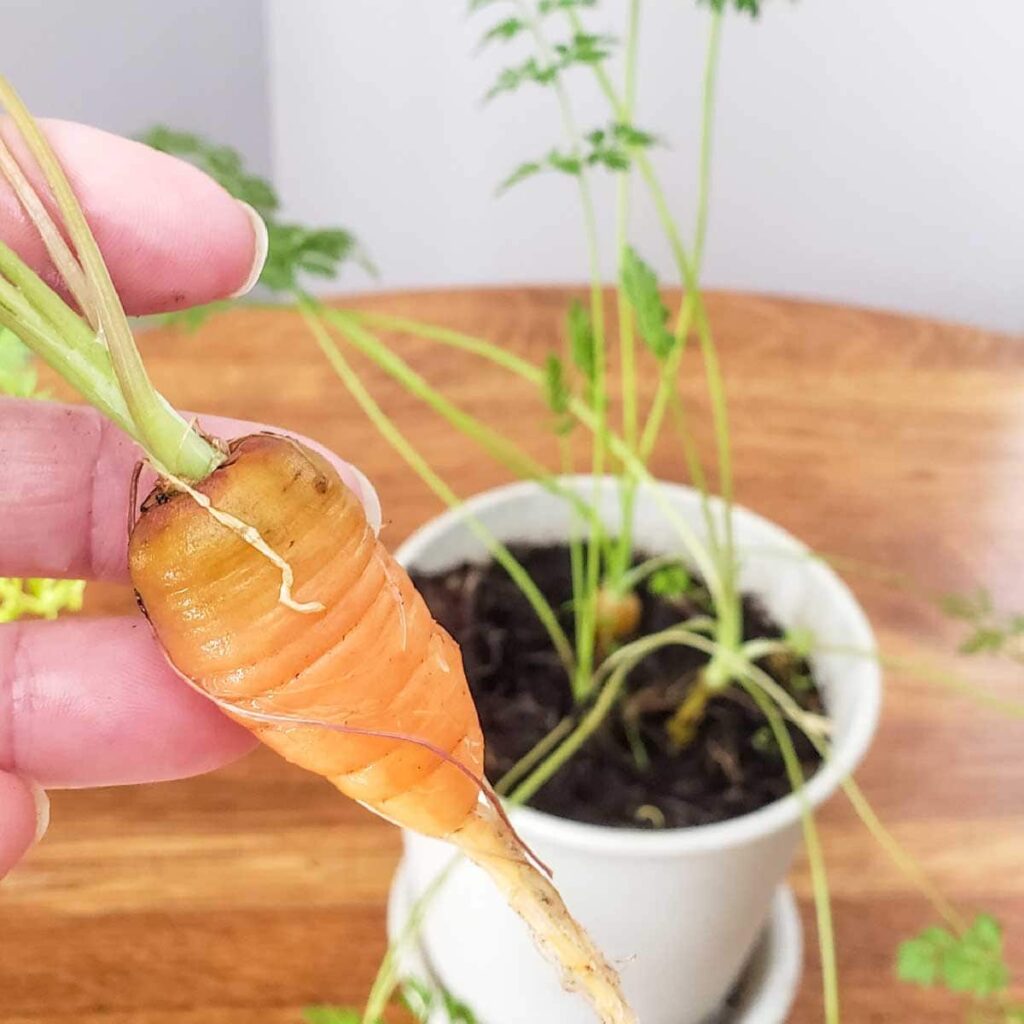
If you don’t have a garden, carrots grow very well in containers:
- Container Depth: At least 12 inches deep.
- Soil Mix: Loose, sandy potting mix.
- Variety Choice: Choose shorter varieties like Nantes or Chantenay.
- Care: Keep the soil evenly moist, and place containers in a spot with 6–8 hours of sunlight daily.
Common Problems and Solutions
- Forked Carrots – Caused by rocky soil or too much nitrogen. Solution: Use loose soil and balanced fertilizer.
- Poor Germination – Carrot seeds are slow to sprout. Solution: Keep soil moist and cover with a thin board until sprouts appear.
- Carrot Fly – A common pest that lays eggs near carrot crowns. Solution: Use row covers and rotate crops yearly.
- Bitter Taste – Often due to hot weather. Solution: Grow carrots in cooler seasons or provide shade in summer.
Harvesting Carrots
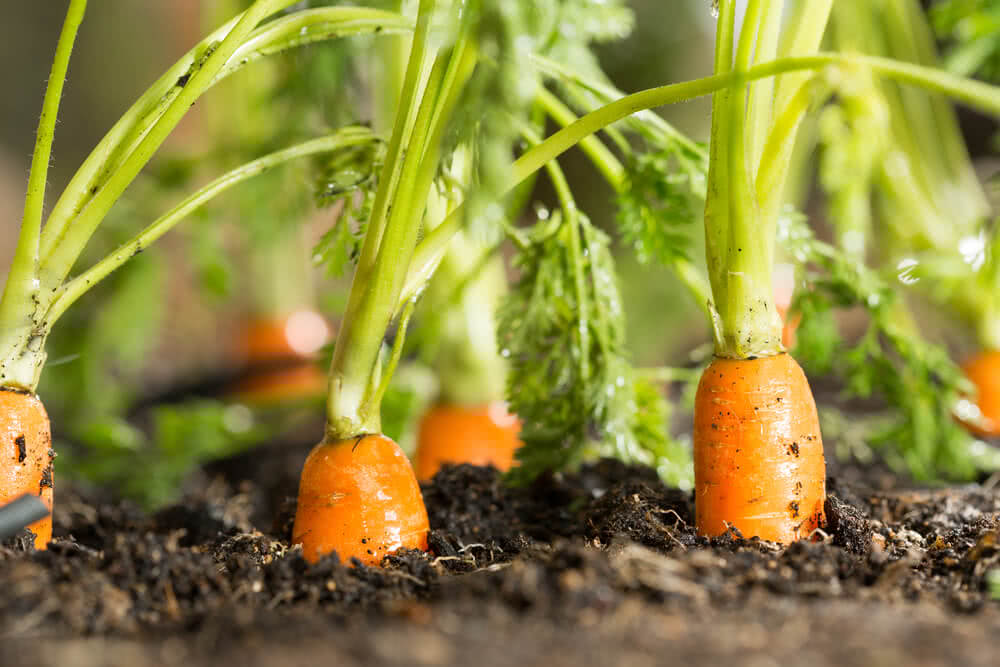
- Timing: Carrots are ready 60–80 days after planting, depending on the variety.
- Signs of Maturity: The shoulders (top part) will be visible above the soil and should look thick and firm.
- Harvesting Method: Loosen soil around the root and gently pull. Avoid yanking as it may break the root.
- Succession Planting: Sow a new row every 2–3 weeks for continuous harvests.
Storing Fresh Carrots
- Short-Term Storage: Keep fresh carrots in the fridge for 2–3 weeks. Remove the greens to prevent moisture loss.
- Long-Term Storage: Store unwashed carrots in damp sand or peat moss in a cool cellar for several months.
- Freezing: Blanch sliced carrots and freeze for extended preservation.
Benefits of Carrot Greens
While many discard carrot tops, they are actually edible and nutritious. They contain vitamin K, calcium, and chlorophyll. Use them in:
- Pesto – Blend with garlic, nuts, and olive oil.
- Soups and Stews – Add a fresh herbal flavor.
- Salads – Use as a garnish or mix with greens.
Final Thoughts
Growing carrots at home is an enjoyable and rewarding gardening project. While planting from seeds is the best way to produce healthy, full-sized carrots, experimenting with tops can be a fun indoor activity that provides edible greens. With the right soil, care, and timing, you can enjoy a steady harvest of sweet, crunchy carrots right from your backyard or balcony.
Whether you are a beginner gardener or someone looking to grow healthier food at home, carrots are an excellent choice. Not only are they easy to cultivate, but they also offer freshness and nutrition that supermarket vegetables can’t match.
So grab a pack of seeds, prepare your soil, and start growing your own carrots today—you’ll be amazed at the difference in taste and quality.
